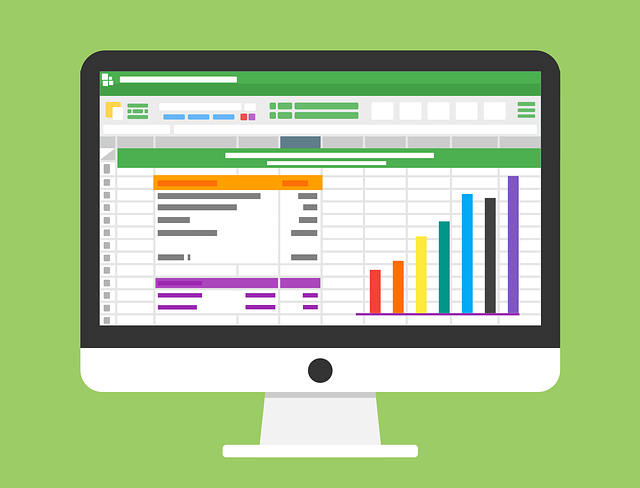You are in the right place to learn how to grow your small business with marketing.
Running a small business comes with its own set of challenges, but with the right marketing strategies, you can propel your business toward success. It takes time and effort, but YOU can do it!
In this article, we will explore effective marketing techniques that will help you grow your small business and achieve your goals.
From harnessing the power of social media advertising to optimizing your online presence, let’s dive into the world of marketing and discover how it can transform your business.
Top 4 Digital Marketing Strategies for Small Businesses
1. Establish a Strong Online Presence
2. Embrace the Power of Social Media Advertising
3. Leverage the Power of Content Marketing
4. Harness the Power of Email Marketing
1. Establish a Strong Online Presence to Grow your Small Business with Marketing
Your website is the digital storefront of your business. Ensure it is visually appealing, easy to navigate, and mobile-friendly. Optimize it for search engines by conducting keyword research and incorporating relevant keywords naturally into your website content. Provide clear calls to action to guide visitors toward conversions.
To lay the foundation for growth, it’s crucial to establish a strong online presence. Below are key strategies to consider:

a. Set Up Social Media Accounts: Create business accounts on popular platforms such as Facebook, Instagram, Twitter, TikTok, and LinkedIn.
Develop a consistent brand voice, engage with your audience daily, and share relevant and valuable content. Respond promptly to comments and messages to build meaningful connections.
b. Create a User-Friendly Website: Your website is the digital storefront of your business. Ensure it is visually appealing, easy to navigate, and mobile-friendly. There are a few techniques that you can set up to boost conversions.
Optimize it for search engines by conducting keyword research and incorporating relevant keywords naturally into your website content. Provide clear calls to action to guide visitors towards conversion.
c. Implement Search Engine Optimization (SEO): Maximize your website’s visibility on search engines by implementing SEO techniques.
Conduct keyword research using tools like Google Keyword Planner or SEMrush to identify relevant keywords for your industry.
Optimize your meta tags, including title tags and meta descriptions, with targeted keywords. Improve website loading speed by optimizing images and leveraging browser caching. Seek opportunities to build quality backlinks from reputable websites in your industry.
And consider, utilizing Paid Search along with SEO. There are multiple reasons for which these should be used at the same time.
2. Embrace the Power of Social Media Advertising to Grow your Small Business with Marketing
Social media platforms have become invaluable marketing tools for small businesses. With billions of active users, platforms like Facebook, Instagram, and Twitter provide unparalleled opportunities to reach and engage with your target audience.
Invest in targeted social media advertising campaigns that align with your business objectives and connect with potential customers.
Social media advertising allows you to reach a highly targeted audience. Follow these steps to optimize your social media ad campaigns:

a. Choose the Right Platforms:
Identify the social media platforms where your target audience is most active.
Different platforms have unique demographics and features, so tailor your campaigns accordingly. For example, if your business targets a younger audience, platforms like Instagram or TikTok may be more effective.
b. Define Your Target Audience: Use analytics tools to gather insights on your audience’s demographics, interests, and behaviors. Develop buyer personas to understand their needs and preferences better. This information will help you create relevant and compelling ad content that resonates with your audience.
c. Create Compelling Ads: Design visually appealing ads with clear and concise messaging.
Use captivating images or videos to grab attention and convey your brand’s value proposition. Incorporate a strong call-to-action that encourages users to take the desired action, such as visiting your website, making a purchase, or subscribing to your newsletter.
3. Leverage the Power of Content Marketing to Grow your Small Business with Marketing
Content marketing is a powerful tool for driving growth and establishing thought leadership. Consider the following strategies:
a. Develop an Engaging Blog:
Create an informative and engaging blog that addresses your target audience’s pain points and provides valuable insights.
Conduct keyword research to identify relevant topics and incorporate keywords naturally into your blog posts. Publish high-quality articles consistently to build trust and credibility.
b. Embrace Visual Content:
Utilize visual content such as images, videos, infographics, and interactive content to capture and maintain your audience’s attention.
Visuals not only enhance engagement but also help convey complex ideas in a more digestible format.
c. Guest Blogging and Influencer Collaborations:
Expand your reach by seeking opportunities to guest blog on industry-relevant websites.
Collaborate with influencers or industry experts who align with your brand values to tap into their established audiences. Guest blogging and influencer collaborations can provide valuable backlinks and exposure.
4. Harness the Power of Email Marketing to Grow your Small Business with Marketing
Email marketing remains a cost-effective and efficient way to engage with your audience. Follow these steps to make the most of this channel:
a. Build an Email List
Offer incentives such as exclusive discounts, free resources, or newsletters to encourage visitors to subscribe to your email list.
Segment your list based on interests, demographics, or purchase history to send targeted and personalized email campaigns.
b. Craft Compelling and Personalized Emails
Write subject lines that grab attention and email content that resonates with each segment of your audience.
Personalization can include addressing recipients by name, tailoring the content to their preferences, or referencing their past interactions with your business. Test different email variations to identify the most effective messaging.
c. Automate Email Campaigns
Utilize automation tools to streamline your email marketing efforts and deliver timely and relevant messages.
Set up automated campaigns triggered by specific actions or events, such as abandoned carts, birthdays, or anniversary dates. Automation saves time and ensures consistent communication with your audience.
Conclusion
By implementing these effective marketing strategies, you can unlock the growth potential of your small business.
Establish a strong online presence, leverage content marketing, harness the power of email marketing, and embrace social media advertising.
Remember to monitor and analyze your marketing efforts to make data-driven decisions and optimize your campaigns for maximum impact.
With consistent effort and a strategic approach, you can drive the growth of your small business and achieve long-term success.




Pingback: Website Design Best Practices to Boost Conversions
Pingback: The Ultimate Guide to Personal Branding Strategy
Pingback: Personal Branding Strategy - The Ultimate Guide